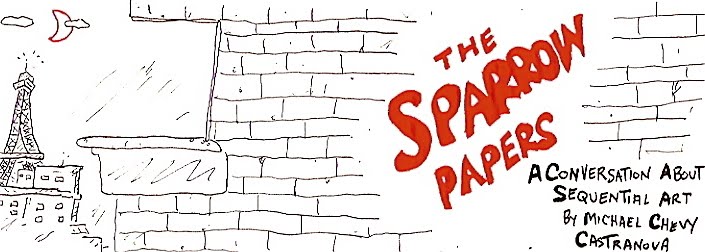 Jason uses pacing, and very little dialog, to convey his stories’, and his characters’, mood. One example: In the “Low Moon” story from which this collection takes its title, bad guy Bill McGill, newly arrived back in town, goes up the hotel stairs. In the next panel, he knocks on a door. In the third panel we see a woman standing in the open doorway. In the fourth, she says, “Well, look what the cat dragged in.”
Jason uses pacing, and very little dialog, to convey his stories’, and his characters’, mood. One example: In the “Low Moon” story from which this collection takes its title, bad guy Bill McGill, newly arrived back in town, goes up the hotel stairs. In the next panel, he knocks on a door. In the third panel we see a woman standing in the open doorway. In the fourth, she says, “Well, look what the cat dragged in.”Another example: In the upper-left panel, the sheriff leaves his office. In panel two, he’s walking along the street. The third panel has him going through a doorway, his back to us. The fourth panel shows him standing still, arms at his side, silently facing a chess set — his inescapable destiny in his upcoming confrontation with Bill McGill.
For a faster-moving narrative, the artist could have used only panels two and four in both these examples. We’d still understand what’s going on, filling in the blanks with our imaginations. But Jason’s tight control of that speed tells us he’s building to something.
Read my earlier post on this book here.

No comments:
Post a Comment